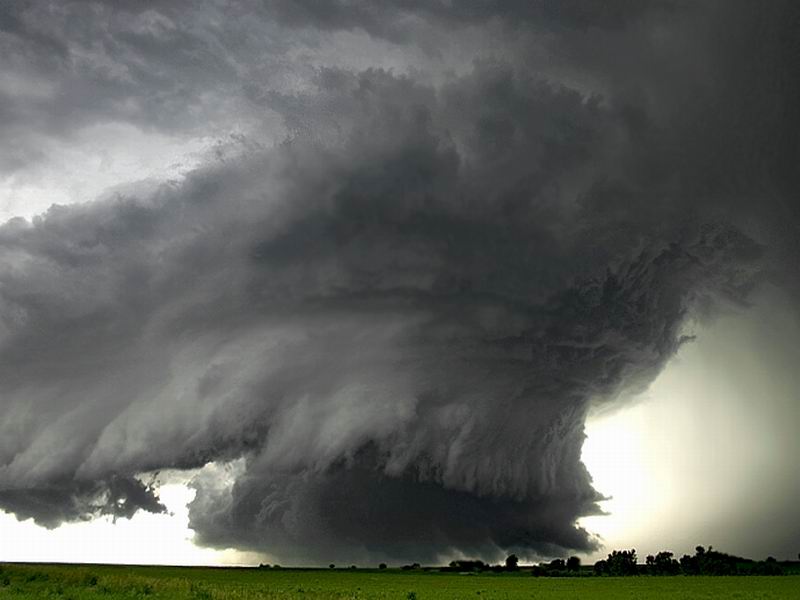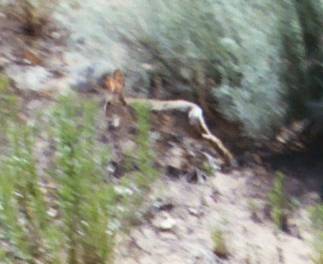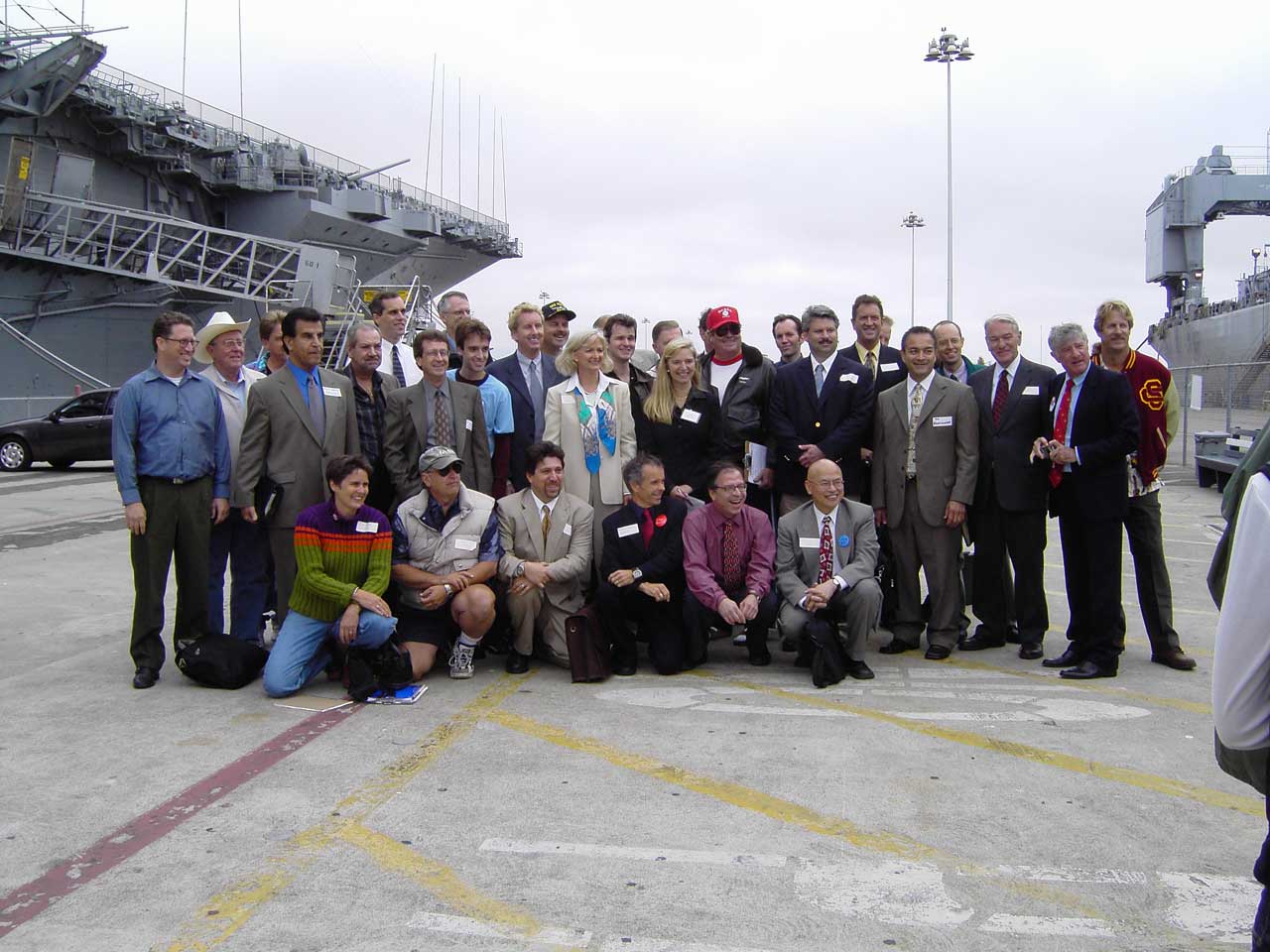Friday, September 16, 2005
"Cabaret" Premieres Tonight!
Tonight inaugurates DMTC's 21st season, at the Varsity Theater, with yours truly as Waiter/Sailor/Max. Come see us if you can!
Link
Tonight inaugurates DMTC's 21st season, at the Varsity Theater, with yours truly as Waiter/Sailor/Max. Come see us if you can!
Link
Helios Airlines Tragedy Clues Emerge
Boy, this sounds really awful (BRAMP! BRAMP! BRAMP!):
Link
Boy, this sounds really awful (BRAMP! BRAMP! BRAMP!):
Reports emerging from Greece portray the unfolding of a grim cockpit comedy, the captain and first officer confused by the sound of a pressure alarm while struggling to communicate. The German captain and Cypriot first officer -- the latter described in some articles as "young" and "inexperienced," which may or may not be meaningful -- did not share a common language and had difficulty understanding one another in English. Both allegedly passed out before the significance of the alarm could be determined. The cause of the initial pressure malfunction, say anonymous sources, was a control knob faultily installed by maintenance staff during the previous evening's inspection.
With respect to the communication conflict between pilots, it's natural to suspect a training problem -- a young carrier with insufficient means to recruit or adequately train linguistically compatible crew members. English is the default and official language of worldwide civil aviation, shared -- in varying degrees of eloquence -- by pilots and air traffic controllers in all but the remotest corners of China and Russia. ... Weakness in fluency is sometimes a problem between controllers and pilots -- several years ago, the near collision of two 747s at Chicago's O'Hare was blamed partly on confusion over taxi instructions, American controllers barking critical orders to Chinese and Korean crews -- but rarely do you hear of dangerous misunderstandings between pilots themselves.
A pressurization knob left out of place by a mechanic, while clearly negligent (apply above questions to maintenance personnel), should not entail a fatal catastrophe. From what we know, the misinstalled knob led to a faulty (perhaps even nil) rate of pressurization, in turn triggering an aural cockpit warning as the cabin reached the equivalent of 10,000 feet. Nothing deadly just yet; there was still plenty of time to troubleshoot and possibly rectify the entire problem.
Unfortunately, the pilots misinterpreted the alarm, believing it to be an errant sounding of the takeoff configuration horn. On the 737-300, both systems share the identical claxon, with a critical caveat: On the ground, the noise means wrongly deployed flaps or slats; in the air, it means the cabin altitude has exceeded 10,000 feet. (Either way, the alarm serves as something of a last resort, with the presumption that crews will have, nine times in 10, noticed and corrected things beforehand.)
Boeing, maker of the 737, acknowledges the potential for confusion, but the use of duplicate alarms is not unheard of, and crews are trained to know, or certainly to seek, the difference. With a token bit of 737 experience myself, I have to chuckle morbidly when reading of the Helios pilots' reaction. I vividly recall a simulator session not so long ago, during which our instructor had programmed a gradual depressurization of the cabin, setting off that very same alarm during cruise flight. All was quiet and uneventful until BRAMP, BRAMP, BRAMP, the speaker screamed. The captain and I sat there for a moment staring at each other. "Why the hell is the takeoff horn going off?"
It wasn't, of course, and after a few moments of scanning the instrument panels, including the pressurization controls, we found the actual culprit. (Wrongly aligned knob or not, separate indicators display the existing level of cabin pressure at all times.) During previous exercises involving a rapid or sudden decompression it was common to hear, and properly interpret, the same horn. Without the accompanying cues, however (a simulated explosion or other violent breach), the sound was confusing. A leaky outflow valve, a balky door seal -- any of several malfunctions can bring about a slow, insidious decompression. Usually they are detected and addressed before the blaring has a chance to start. But, as I experienced firsthand, not always.
...If the takeoff configuration horn is sounding when you're at 30,000 feet, stop for a minute. Maybe it isn't the takeoff configuration horn. Snoop around and see. Do not, on the other hand, assume you know what's happening and begin to dig for a circuit breaker in order to silence the warning. That's what the Helios pilots attempted to do after consulting with their maintenance department via radio. While the captain was up looking for the right breaker to quell the noise, his unpressurized jet continuing to climb, he succumbed to hypoxia and passed out. Already impaired, the first officer lost consciousness soon thereafter. On automatic pilot, the plane ascended to 34,000 feet and kept going all the way to Athens, a way point along its route from Larnaca, Cyprus, to a planned destination of Prague, Czech Republic. Over Athens it entered a preprogrammed holding pattern until eventually running out of fuel.
In addition to a level of incredulity over the egregious and ultimately fatal misinterpretation of the aural alerting system, we're left with a litany of obvious questions: Why were the pilots not able to spot the improperly installed controller knob during their preflight checks? Why did they not catch the lack of increasing pressure during initial climb -- whether on the instrument indicators or simply by feeling it in their ears and sinuses? Why did they fail to draw a connection between deployment of the main cabin oxygen masks, an indication of which was made clear by a cockpit annunciator, and the ongoing siren? Why didn't the maintenance staff, in contact with the pilots over the air, offer a clue as to what might be happening? And when the ceiling masks came popping from their holsters, why didn't the flight attendants summon the pilots' attention, further hinting at the fact that something considerably more dire than a disobedient takeoff alarm was unfolding?
...The crux of this accident isn't about a failure to understand English, it's about why two qualified 737 pilots, regardless of what languages they spoke or didn't speak, were incapable of deciphering the cause of a yelping cockpit alarm, and why nobody was able to help them.
...Consider also the series of breakdowns, from the tangible mistake of a misrigged instrument to the subsequent garble of procedure and protocol. None of these things, independently, was enough to kill. Eventually, as the miscues compounded, the bottom fell out. We've seen this pattern before, and one hopes we'll learn from it.
Link
Thursday, September 15, 2005
"42nd Street" Rehearsal Video
Melody Davi's feet get some air time on Elmira, NY's WETM TV-18. According to her father, Tony:
Link
Melody Davi's feet get some air time on Elmira, NY's WETM TV-18. According to her father, Tony:
If you can open this, take a look at their first rehearsal on stage last night. It is really more of a walk through since it is the first time using the stairs but it gives a good idea what is going on behind the scenes. Mel is in front in the dance with Billy and then when you see one person tapping, those are her legs.
Link
Hurricane Katrina, in 2005 ....Or Iowa, in 2004?
Here are several pictures from a set making the rounds on the Internet. I put in a request to see who took these pictures, when, and from where. Now, my second-hand contact says they aren't from Hurricane Katrina at all, but from Iowa in 2004. But it's still quite vague, the details on these shots. Nevertheless, I don't care that much: it's the photos themselves that speak volumes.
One advantage of (having once lived in) the dry American Southwest is that thunderstorm cloud base is usually so high that the storm clouds can often be seen in great, picturesque detail. Even though storm clouds east of the Mississippi River are typically much larger, cloud base is so low that they often can't be seen clearly, and so the effect isn't as picturesque.
With a big storm (or a hurricane), violent, humid updrafts are located very close to drier, violent downdrafts. With good visibility provided by a low sun angle (this is presumably near sunset), the effect is to allow great views of amazingly violent processes - much better than what you see even in the American Southwest.
As a meteorologist, I have to say these are the best pictures of 'wall clouds' I've ever seen. Wall clouds are the wall-like clouds that appear to be lower than typical cloud deck. They are caused by violent updrafts of very humid air, air that is more humid than its immediate surroundings, but which is moving upwards so rapidly that it doesn't have time to mix with its immediate, drier surroundings. In violent thunderstorms, wall clouds usually signal big trouble - the location from where funnel clouds will descend. The drier, descending air all around the wall cloud permits the wall cloud to be seen. In fact, I never imagined wall clouds could have such clearly-visible vertical extents as these wall clouds do!

Here she comes!

You open the Venetian blinds, see a skyscape like this, and all you want to do is shut the blinds!

Awesome wall cloud!

A better view of the awesome wall cloud!

The sky is looking increasingly ominous......
Storm Pictures, Attributed!
Aha! Those fabulous storm pictures are indeed from the Midwest!:
Here are several pictures from a set making the rounds on the Internet. I put in a request to see who took these pictures, when, and from where. Now, my second-hand contact says they aren't from Hurricane Katrina at all, but from Iowa in 2004. But it's still quite vague, the details on these shots. Nevertheless, I don't care that much: it's the photos themselves that speak volumes.
One advantage of (having once lived in) the dry American Southwest is that thunderstorm cloud base is usually so high that the storm clouds can often be seen in great, picturesque detail. Even though storm clouds east of the Mississippi River are typically much larger, cloud base is so low that they often can't be seen clearly, and so the effect isn't as picturesque.
With a big storm (or a hurricane), violent, humid updrafts are located very close to drier, violent downdrafts. With good visibility provided by a low sun angle (this is presumably near sunset), the effect is to allow great views of amazingly violent processes - much better than what you see even in the American Southwest.
As a meteorologist, I have to say these are the best pictures of 'wall clouds' I've ever seen. Wall clouds are the wall-like clouds that appear to be lower than typical cloud deck. They are caused by violent updrafts of very humid air, air that is more humid than its immediate surroundings, but which is moving upwards so rapidly that it doesn't have time to mix with its immediate, drier surroundings. In violent thunderstorms, wall clouds usually signal big trouble - the location from where funnel clouds will descend. The drier, descending air all around the wall cloud permits the wall cloud to be seen. In fact, I never imagined wall clouds could have such clearly-visible vertical extents as these wall clouds do!

Here she comes!

You open the Venetian blinds, see a skyscape like this, and all you want to do is shut the blinds!

Awesome wall cloud!

A better view of the awesome wall cloud!

The sky is looking increasingly ominous......
Storm Pictures, Attributed!
Aha! Those fabulous storm pictures are indeed from the Midwest!:
Storm chaser Mike Hollingshead hasn't been paid or given credit for the photos that have appeared in the Netherlands, Canada, Australia and Brazil, among other places. Furthermore, the photos of tornadoes in Nebraska, Kansas and Iowa are being passed off as Hurricane Katrina pictures.
Many people received the photos in their inbox. They've been sent thousands of times. Hollingshead has link after link on his Web site to all of the other sites, chat rooms and e-mails where his pictures have appeared.
The pictures were mostly taken in 2004. All were snapped within a few hundred miles of Omaha.
Hollingshead takes the pictures for a living, and about nine months ago, he started getting e-mails from other storm chasers telling him his pictures were appearing around the world.
"People started selling them to magazines like Weatherwise, then a Dutch magazine about weather, then to newspapers and TV shows," Hollingshead said.
He said he tried to correct the Web sites, but it just kept spreading.
Old Man Of The Sea
Jack Welch, former chairman and CEO of General Electric, wrote a bluff and hearty editorial in yesterday's Wall Street Journal (available on their OpinionJournal service), regarding the five stages of crisis management, as applied in this case, to Hurricane Katrina. The editorial makes interesting reading, on its own terms, about the limitations of large organizations in dealing with calamities.
Welch's editorial is written in the familiar, exaggerated over-confident, cheerily sloppy way that men of Big Business seem to prefer to write. For example, he doesn't check his facts too closely:
Nevertheless, I can't come down hard on Welch: he makes me smile. He introduces his editorial with that familiar stock character, an 'Old Man of the Sea' type, a man wise to the ways of Mother Nature:
Link
Jack Welch, former chairman and CEO of General Electric, wrote a bluff and hearty editorial in yesterday's Wall Street Journal (available on their OpinionJournal service), regarding the five stages of crisis management, as applied in this case, to Hurricane Katrina. The editorial makes interesting reading, on its own terms, about the limitations of large organizations in dealing with calamities.
Welch's editorial is written in the familiar, exaggerated over-confident, cheerily sloppy way that men of Big Business seem to prefer to write. For example, he doesn't check his facts too closely:
Yes, there has never been a natural disaster of Katrina's magnitude in our history. An entire city has been devastated, hundreds of lives lost, and hundreds of thousands of people displaced. In terms of impact, only an extended catastrophe like the Great Depression can compare in scope.Actually, disasters of this scope HAVE occurred before: Salon compiled a list of the Top 10 killer disasters, and so far, Hurricane Katrina is just number 10. This list doesn't include big property disasters, like the 1930's Dust Bowl, Mt. St. Helens in 1980, the Mississippi floods of 1993, or the even bigger floods of 1927. Perhaps in the long run, Welch may be right, once everything is totalled up, but he's a bit out-on-a-limb at the moment.
Nevertheless, I can't come down hard on Welch: he makes me smile. He introduces his editorial with that familiar stock character, an 'Old Man of the Sea' type, a man wise to the ways of Mother Nature:
Our last day in Nantucket this summer, we bumped into a crusty old islander we know, a sea-hand who has seen his share of hurricanes. We asked him about the storm bearing down on New Orleans. "Probably just another overhyped Weather Channel event," he mused. We saw him again the next day, a few hours after the storm's landfall, and he repeated his take, this time with relief. We agreed--the pictures on TV weren't that bad.Welch inadvertently reveals his 'crusty old islander' as being uninformed at best, or an idiot at worst. On Saturday, August 27th, two days before landfall, while Hurricane Katrina was still far out in the Gulf of Mexico, it required just one glance at the satellite picture (I even blogged about it) to reveal that the storm had, overnight, morphed from a run-of-the-mill minor hurricane into one of the largest, strongest hurricanes ever observed by humankind anywhere, an awesome, thrashing killer that would level anything it even approached. Perhaps the Weather Channel didn't make that point sufficiently clear at the time. Perhaps people were in the first stage of crisis mangement that Welch identifies: denial. In any event, it's quite clear now how powerful Hurricane Katrina was. Maybe even that 'crusty old islander' learned a thing or two from the experience!
Link
Wednesday, September 14, 2005
The Buck Doesn't Stop With George Will
George Will's recent editorial regarding Hurricane Katrina, and the problems of the poor, appalled me. Will's chutzpah is incredible: he blames the problems of the poor, and by extension, their vulnerability to Hurricane Katrina, to that old bogeyman - you guessed it - liberals!:
Will's complacent ignorance is amazing. Referring to statements by Illinois Senator Barack Obama:
Will is not content to blame liberals, but rather blame the victims as well, even if many of them are children, or the elderly:
Conservatives underestimate what active, engaged government can do. Big Government can't do everything, or even many things, but it should do those things it can, like work closely with state and local governments to ameliorate natural and man-made catastrophes, as well as ameliorate poverty, which Big Society programs have done well, despite Will's calumnies, for many years now.
Link
George Will's recent editorial regarding Hurricane Katrina, and the problems of the poor, appalled me. Will's chutzpah is incredible: he blames the problems of the poor, and by extension, their vulnerability to Hurricane Katrina, to that old bogeyman - you guessed it - liberals!:
The idea that Hurricane Katrina would change the only thing that matters -- thinking -- perished even more quickly, at about the time Louisiana Sen. Mary Landrieu, a suitable symbol of congressional narcissism, dramatized the severity of the tragedy by taking a television interviewer on a helicopter flight over her destroyed beach house. "Washington rolled the dice and Louisiana lost," she said in a speech on the Senate floor that moved some senators to tears. You can no more embarrass a senator than you can a sofa, so the tears were not accompanied by blushing about having just passed a transportation bill whose 6,371 pork projects cost $24 billion, about 10 times more than the price of the levee New Orleans needed. Louisiana's congressional delegation larded the bill with $540,580,200 worth of earmarks, one-fifth the price of a capable levee.Will's part of the blame game ignores lots of factors, like the historic role of race in determining the settlement patterns around New Orleans. In addition, the nation's spending priorities have largely been under the control of conservatives for many years now - since 1980, actually. For years now, even during the Clinton Administration, liberals have not had that much influence over determining what pork gets into highway spending bills, or what the priority is on levee maintenance, but conservatives have had that influence, and continue to do so.
Will's complacent ignorance is amazing. Referring to statements by Illinois Senator Barack Obama:
He might, however, care to note three not-at-all recondite rules for avoiding poverty: Graduate from high school, don't have a baby until you are married, don't marry while you are a teenager. Among people who obey those rules, poverty is minimal.Has Will ever heard of health problems? Or extended periods of unemployment? It's very easy in America for married and unmarried people of all ages to fall into poverty!
Will is not content to blame liberals, but rather blame the victims as well, even if many of them are children, or the elderly:
Liberalism's post-Katrina fearlessness in discovering the obvious -- if an inner city is inundated, the victims will be disproportionately minorities -- stopped short of indelicately noting how many of the victims were women with children but not husbands. Because it was released during the post-Katrina debacle, scant attention was paid to the National Center for Health Statistics' report that in 2003, 34.6 percent of all American births were to unmarried women. The percentage among African American women was 68.2.Forgive me, if you will, if I never care again about conservative priorities. If conservatives can't be bothered to extend a quick helping hand to African-Americans whose lives are in immediate jeopardy, people from whom they expect services when on vacation in New Orleans, like hotel-room cleaning (then whom they pay a pittance), particularly when those same workers have already been taxed for the service, then conservatives have exiled themselves from their own community - why should I care any longer what they think?
Given that most African Americans are middle class and almost half live outside central cities, and that 76 percent of all births to Louisiana African Americans were to unmarried women, it is a safe surmise that more than 80 percent of African American births in inner-city New Orleans -- as in some other inner cities -- were to women without husbands. That translates into a large and constantly renewed cohort of lightly parented adolescent males, and that translates into chaos in neighborhoods and schools, come rain or come shine.
Conservatives underestimate what active, engaged government can do. Big Government can't do everything, or even many things, but it should do those things it can, like work closely with state and local governments to ameliorate natural and man-made catastrophes, as well as ameliorate poverty, which Big Society programs have done well, despite Will's calumnies, for many years now.
Link
Tuesday, September 13, 2005
Making A Connection
Nora Ephron wonders if Cheney and Bush had a falling out. Which reminds me of something Digby wrote last year, about how Bush was bound to break free of his minders once he won a second term - 'Let Bush, Be Bush,' so to speak - and then NO ONE would EVER tell George W. Bush what to do, ever again - including that good, old (moping) SOB, Cheney!
Link
Nora Ephron wonders if Cheney and Bush had a falling out. Which reminds me of something Digby wrote last year, about how Bush was bound to break free of his minders once he won a second term - 'Let Bush, Be Bush,' so to speak - and then NO ONE would EVER tell George W. Bush what to do, ever again - including that good, old (moping) SOB, Cheney!
Link
Under The Gun
The "Cabaret" cast moved into the Varsity Theater, yesterday evening (a day later than we are accustomed to for shows). The set looks fairly simple, and my costume changes are (mercifully) easy to handle in this show. Nevertheless, there's room for improvement of the show itself. It's always odd to finally move around on the actual stage, and to work under show-like conditions: people stepping on toes, forgetting lines, forgetting props, getting distracted by bright, shiny objects. Tonight will be better.
The "Cabaret" cast moved into the Varsity Theater, yesterday evening (a day later than we are accustomed to for shows). The set looks fairly simple, and my costume changes are (mercifully) easy to handle in this show. Nevertheless, there's room for improvement of the show itself. It's always odd to finally move around on the actual stage, and to work under show-like conditions: people stepping on toes, forgetting lines, forgetting props, getting distracted by bright, shiny objects. Tonight will be better.
Monday, September 12, 2005
Has Anyone Seen Mousy?
Last seen ascending over Berkeley:
Link
Last seen ascending over Berkeley:
Mousie, it should be pointed out, is not a live mouse but a 3-inch-tall stuffed mouse. That does not make Mousie any less real to Caroline, who has treasured Mousie since the day nine years ago when her dad brought the toy home from a business trip.
....The tale began to turn gray last week. During a birthday party for her kid sister on Sept. 1, Caroline tied a pair of helium balloons to Mousie and began pushing her around the house, partly to give her rodent friend an aerial view of his lodgings and partly to find out how many balloons it takes to float a mouse.
But someone left her bedroom window open and, as Caroline watched in horror, a sudden gust carried the floating Mousie out the window, past the maple tree in the backyard, over the rooftop and gone.
Caroline and her mother began running down the street, trailing the floating mouse, until it drifted past the Claremont Hotel and over the East Bay hills.
"I don't think he wanted to see the world," Caroline said. "He wasn't that kind of mouse. But he's seeing it now, whether he wanted to or not."
...Caroline checked the weather report for that day and learned that the wind was blowing eastward, at 15 mph. She checked with the balloon store and learned that the balloons were premium grade and can last a week or more. She figures the mouse could still be flying, somewhere over Ohio by now.
The family is coping, mother and daughter agreed.
..."This whole thing is a tragedy," Caroline said. "I know it's not a real mouse. I know there are bigger tragedies, like the hurricane. But it's a tragedy to me."
Link
"Cabaret" Tech Week Begins
DMTC is now moving into tech week rehearsal for "Cabaret." Things have been pretty busy, with rehearsal, and also with DMTC Board activities. Normally, we'd be in the Varsity Theater already, but we actually move in there tonight.
Last night, working in the rehearsal space, W.H. fell (extent of injury unknown), as also apparently did W.C. (I had just left, so I missed it). That smooth concrete floor is unforgiving: in fact, it's unsuitability for serious theater work was the first thing I noticed when I entered the building for the first time in 2000, and it's been nothing but a menace. It will be nice to leave that floor behind, when we finally leave for the Hoblit.
DMTC is now moving into tech week rehearsal for "Cabaret." Things have been pretty busy, with rehearsal, and also with DMTC Board activities. Normally, we'd be in the Varsity Theater already, but we actually move in there tonight.
Last night, working in the rehearsal space, W.H. fell (extent of injury unknown), as also apparently did W.C. (I had just left, so I missed it). That smooth concrete floor is unforgiving: in fact, it's unsuitability for serious theater work was the first thing I noticed when I entered the building for the first time in 2000, and it's been nothing but a menace. It will be nice to leave that floor behind, when we finally leave for the Hoblit.
Indecisive Ophelia
Current NOGAPS model shows Ophelia moving into the Wilmington-Camp Le Jeune-Cape Lookout, NC area on Wednesday morning, and stalling there well into Saturday night, before heading NE towards New England. Even though Ophelia is a fairly small storm, having it linger directly overhead for days at a stretch will likely mean lots of flooding for this area...
Current NOGAPS model shows Ophelia moving into the Wilmington-Camp Le Jeune-Cape Lookout, NC area on Wednesday morning, and stalling there well into Saturday night, before heading NE towards New England. Even though Ophelia is a fairly small storm, having it linger directly overhead for days at a stretch will likely mean lots of flooding for this area...









